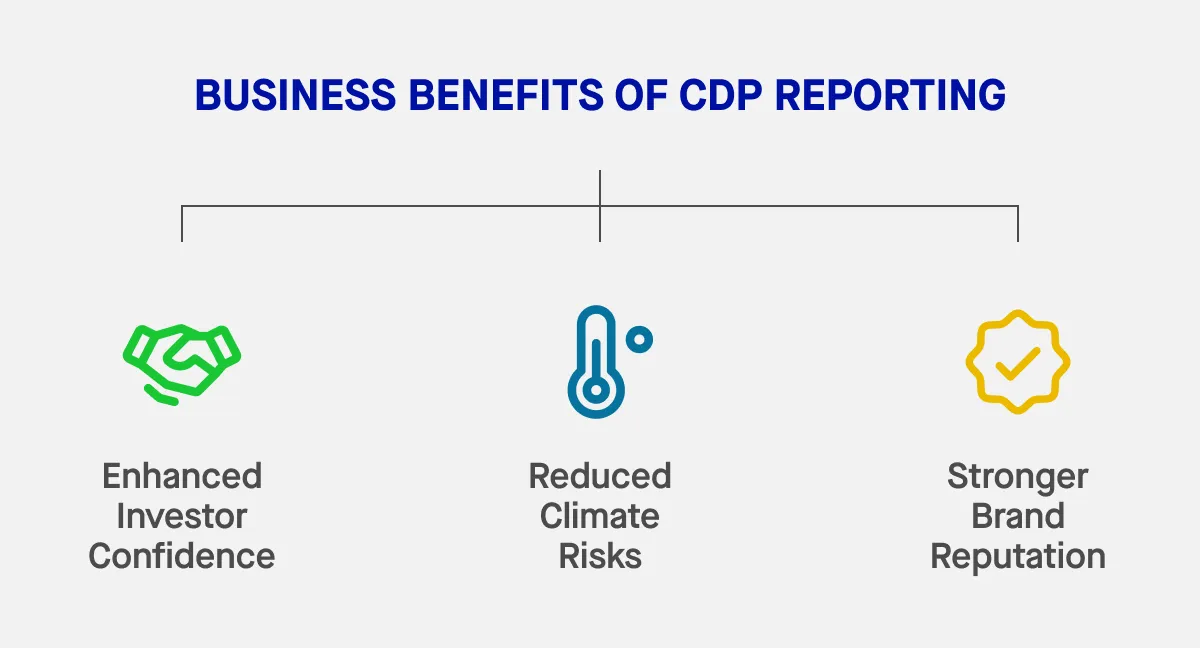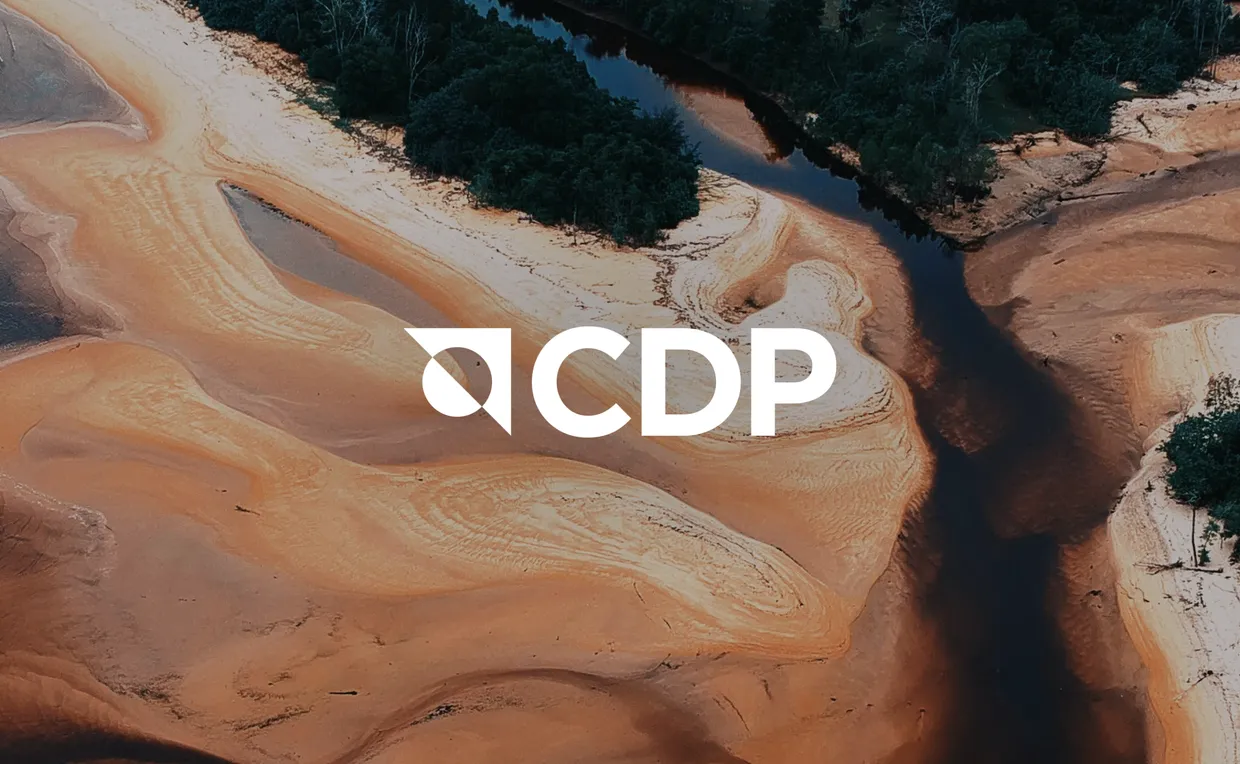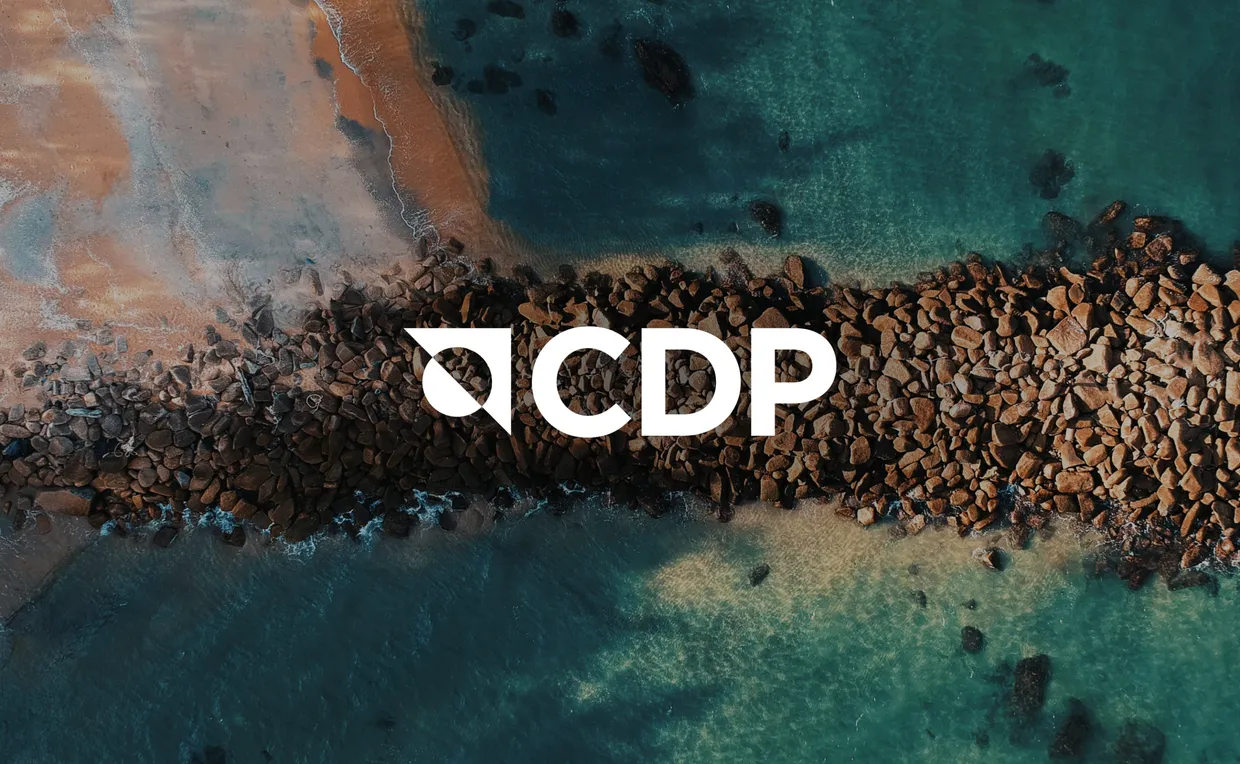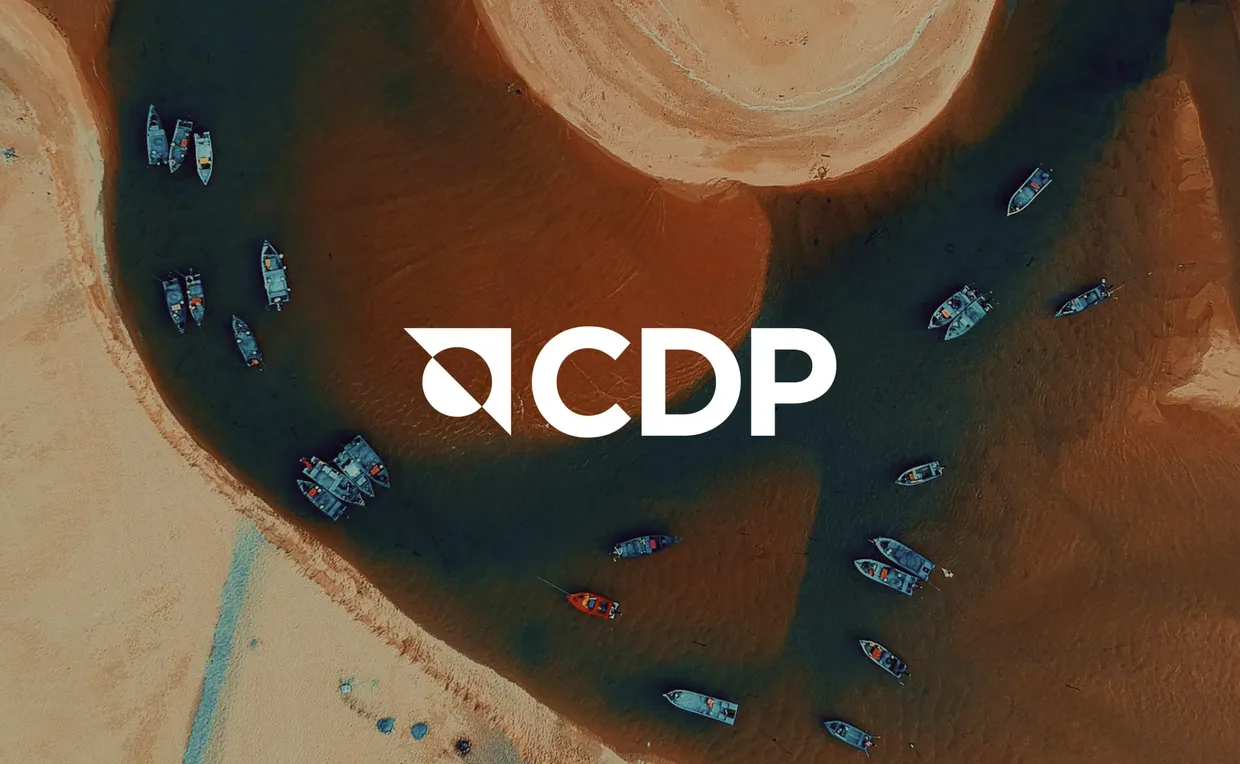In 2024, a record-breaking 22,700+ companies disclosed environmental data through CDP—the world’s leading disclosure platform. Yet, only 2% (515 companies) achieved the top ‘A’ score, highlighting that while transparency is accelerating, the standards for environmental leadership remain exceptionally high.
For businesses navigating increasing regulatory demands, investor scrutiny, and stakeholder expectations, CDP reporting offers a structured, credible route to assess climate related risks, reduce financial risks, and build trust through transparent environmental reporting. Whether you’re new to the process or aiming to improve your carbon disclosure rating, understanding how to report via CDP is more essential than ever.
What is the Carbon Disclosure Project (CDP)? A recap
CDP (formerly the Carbon Disclosure Project) is a global non-profit that runs the world’s leading environmental disclosure system for companies, cities, and governments. The CDP framework is a popular voluntary reporting framework and is part of broader ESG reporting frameworks. It provides a standardized framework for environmental reporting across three key themes:
- Climate change
- Water security
- Forests
The CDP climate change questionnaire is a key component of the CDP framework, serving as a primary tool for organizations to disclose climate-related risks, greenhouse gas emissions, and sustainability strategies. Alongside the climate change questionnaire, other CDP questionnaires such as Water and Forests are part of the reporting frameworks offered by CDP, enabling organizations to report on a range of environmental impacts.
CDP questionnaires are aligned with widely used frameworks, including the TCFD (Task Force on Climate-related Financial Disclosures) and the global reporting initiative (GRI), making CDP a central player in ESG and sustainability disclosure.
The key benefits of CDP reporting
- Better environmental governance: CDP encourages companies to assess and manage climate related risks, enabling more robust governance strategies.
- Increased transparency and trust: Public disclosure through CDP builds trust with stakeholders, including investors, customers, and regulators.
- Improved financial resilience: Understanding exposure to environmental risks supports long-term financial planning and reduces vulnerability to regulatory or physical disruptions.
- Benchmarking and scoring: CDP’s scoring system allows companies to compare environmental performance and sustainability performance year-on-year and with peers, offering a roadmap for continuous improvement. CDP scores, including the CDP score, are determined through CDP reviews of submitted disclosures, providing a transparent evaluation of a company’s environmental impact and risk management practices.
- Competitive advantage: Companies that lead in disclosure often attract sustainability-focused investors and improve brand reputation. Strong sustainability performance and proactive risk management can enhance business strategy, supporting long-term growth and competitive advantage.

How do you report via the CDP in 5 steps?
CDP reporting is an annual process that spans data collection, internal alignment, and submission through CDP’s Online Response System (ORS). Below are the five core steps to navigate the CDP reporting process effectively.
1. Understand your CDP questionnaire(s)
The first step is identifying which CDP questionnaire(s) apply to your business. CDP offers three main questionnaires:
- Climate change: Covers greenhouse gas (GHG) emissions, transition plans, climate targets, scenario analysis, and governance. The CDP climate change questionnaire and the climate questionnaire are key tools for collecting data on carbon emissions, carbon footprint, direct emissions, and carbon footprints, helping organizations measure and disclose their environmental impacts.
- Water security: Focuses on water withdrawal, discharge, risk mapping, and performance metrics.
- Forests: Relates to deforestation risks in commodities such as timber, palm oil, soy, and cattle products.
Your industry sector and investor requests determine which questionnaire(s) you are expected to respond to. Review each section of the relevant questionnaire(s) early—understanding the full scope and format helps shape the reporting strategy and resourcing needs.
Each questionnaire consists of modular components requiring both qualitative and quantitative data, including narratives on governance and detailed metrics such as Scope 1, 2, and 3 emissions. It is important to include emissions factors in your calculations and to report on environmental impacts and environmental information, including carbon footprints, to ensure transparency and meet stakeholder expectations.
2. Identify key internal stakeholders and data owners
Successful CDP reporting depends on cross-functional collaboration. Start by mapping internal stakeholders responsible for relevant data sources. Common participants include:
- ESG and sustainability teams (overall coordination, emissions data)
- Facilities and operations (energy use, building data)
- Finance and procurement (supplier engagement, carbon pricing)
- Risk and compliance (climate-related financial disclosures)
- HR and legal (policy documentation, diversity and inclusion measures)
Once identified, establish clear responsibilities for data contribution and sign-off. Assign project leads or working groups where needed. Strong internal communication prevents bottlenecks and reduces errors.
3. Map questionnaire questions to business operations
CDP’s questions cover topics that span every corner of a business. To ensure accurate environmental reporting, map each question—or question group—to specific processes, data sources, and departments.
For example:
- Scope 1 and 2 emissions may be derived from energy management systems.
- Scope 3 emissions often require input from procurement and logistics teams.
- Carbon pricing and transition plans need input from finance.
- Water discharge metrics may be available through EHS or operations departments.
Create a data map or matrix that links each CDP requirement to a business owner, data source, and timeline for delivery. This can streamline project management and prevent duplicative or inconsistent responses.
4. Collect, validate, and standardize your data
Data collection is the most time-consuming part of the CDP reporting process. Use templates, shared drives, or ESG tools to coordinate collection across departments. It is essential to collect reliable carbon data and ensure that your CDP data is comprehensive, traceable, and accurate, as this information is used by investors and stakeholders to assess your environmental impact.
To ensure data quality:
- Use recognized methodologies such as the GHG Protocol or ISO 14064.
- Validate assumptions and document calculation methods for transparency.
- Include emission factors for all conversions (sourced from IPCC, DEFRA, US EPA, etc.).
- Segment Scope 3 emissions into relevant categories, and identify areas where estimation or proxy data was used.
Ensure your final dataset is auditable. CDP frequently asks for clarification on data points—so be ready with detailed notes and sources. If third-party verification was conducted, mention it to increase credibility.
5. Draft, review, and submit your response
Begin drafting your answers directly in CDP’s Online Response System or via export templates. Responses should be:
- Concise and precise: Avoid vague language—CDP rewards clarity.
- Consistent across answers: Ensure metrics match across sections (e.g. total emissions should align with targets).
- Narrative-driven: Use short case studies or internal examples to highlight performance improvements or initiatives.
- Aligned with strategy: Reference business objectives, climate targets, and governance structures to show integration.
Once drafted, have internal reviewers, ideally a sustainability lead and a legal or compliance contact, check for completeness and alignment. If feasible, conduct a mock scoring using CDP’s scoring methodology. This internal review should ensure your CDP disclosure is accurate and comprehensive, as CDP reviews your submission to determine your CDP score. Achieving high CDP scores is significant, as these scores benchmark your environmental performance and transparency, and a strong CDP score can enhance your reputation with stakeholders.
Submit your response by the deadline (typically mid September). It is crucial to submit responses within the designated response window to ensure eligibility for CDP reviews and scoring. Late submissions may not be scored and may be excluded from CDP’s annual reports and investor databases.
How ESG software can help with CDP reporting
While CDP reporting can be managed manually, ESG software platforms offer significant advantages in managing data complexity and streamlining disclosure. As sustainability reporting becomes increasingly important for organizations to meet regulatory requirements and voluntary disclosures, the use of sustainability reporting software is essential for efficient, accurate, and scalable reporting processes. This is especially relevant as cdp reporting mandatory requirements are emerging in certain sectors, making robust technology solutions critical for compliance and transparency.
Centralize environmental data collection
Instead of pulling from multiple spreadsheets and disconnected systems, ESG tools provide a central repository for data across business units. These platforms help centralize CDP data, environmental information, and detailed information, making it easier to manage comprehensive reporting and disclosures. This reduces redundancy, improves version control, and increases confidence in your reporting.
Automate recurring data updates
ESG tools can automate data pulls from meters, systems, and vendor platforms. They can also streamline the collection of carbon data, emissions factors, and internal carbon pricing information, making it easier to track and update these key sustainability metrics. This ensures up-to-date inputs, supports frequent performance checks, and lightens the administrative burden on ESG teams.
Map data directly to CDP frameworks
Many ESG tools include pre-configured modules that align data inputs directly with CDP questionnaires. These tools are designed to align with the CDP framework, supporting CDP work by enabling organizations to measure, disclose, and manage their environmental impacts in line with global standards. This illustrates how CDP works in practice, fostering collaboration with companies and other stakeholders to promote transparency and sustainability. This helps avoid duplication, speeds up the response process, and ensures full coverage of required topics.
Ensure audit-readiness
Built-in data validation rules, change logs, and documentation repositories make ESG tools ideal for audit trails. You’ll be able to trace emissions back to their source and justify assumptions, a key requirement in robust carbon disclosure.
Support multi-framework reporting
Since CDP reporting contributes to frameworks like TCFD, CSRD, and GRI, many ESG tools allow companies to reuse data across disclosures. These tools facilitate alignment with related financial disclosures such as TCFD, support comprehensive climate disclosures, and integrate with other ESG reporting frameworks. This saves time, ensures consistency, and supports a “report once, disclose everywhere” approach.
Final thoughts
CDP reporting is an essential part of modern corporate environmental reporting. It gives businesses a structured way to communicate their environmental impact, manage climate related risks, and respond to investor and stakeholder expectations.
While the reporting process can be rigorous, it brings valuable rewards—from stronger governance to improved investor confidence. And with the right preparation, tools, and collaboration in place, businesses can turn disclosure into action and build lasting environmental and financial resilience.



